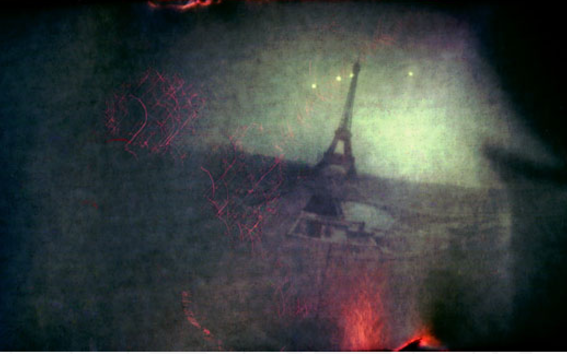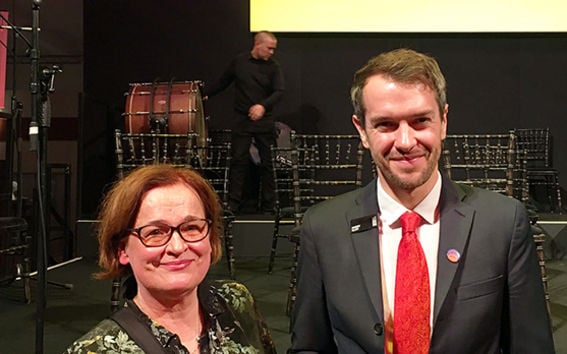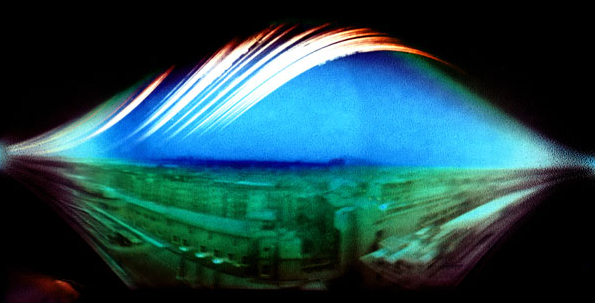International exhibition features Aalto researcher's solargraphy photos

For Tarja Trygg, it all started at an international photography workshop in Poland in 2002. That’s where she saw a solargraph for the first time. “I remember asking the presenter, ‘what are those curved lines?’. And he said they were paths of the sun. I couldn’t believe it at first.” Trygg quickly became mesmerized by the look of solargraphs and the patterns in the sun’s movement they revealed.
A solargraph is a form of pinhole photograph that tracks the path of the sun over a long period. Along with a ghostly landscape that somehow reflects what the camera ‘sees’, a solargraph is marked by a series of white lines, often arcs. These lines indicate how high the sun rises in the sky at different times of the year.
The chance encounter sparked an interest in trying it herself. Trygg quickly learned the basics of solargraphy: a homemade pinhole camera, a piece of photographic paper and a secure position facing the sun’s movement. She built her first pinhole camera out of an empty beer can and mounted it to her balcony railing.
Soon she was hooked. While looking at the succession of curves on each solargraph, she wondered: how might these look different in the southern hemisphere? What would be the difference in a different part of the globe? In the 16 years since she has constructed hundreds of pinhole cameras and sent them to volunteers all over the world. At first, she asked friends and colleagues, then researchers and artists she met at international conferences. After a time, she began to solicit volunteers (via her website) – in total, she has worked with almost a thousand can assistants, as she calls them.
The result is hundreds of solargraphs of incredible variety, from most inhabited latitudes on earth. A modest person, Trygg has created and collected what may be the most impressive collection of solargraphs in the world. Many of them are on her website, and she has been invited to participate in many international exhibitions.
Invitation to contribute to the Sun exhibition in London
Recently Trygg was asked to submit twenty of her solargraphs to be part of an exhibition at the Science Museum in London, the most extensive exhibition of The Sun ever to be shown. Aware of Tarja Trygg’s reputation as one of the most prolific solargraphers, lead curator Dr. Harry Cliff contacted Trygg and invited her to participate in the exhibition. The idea was to find a good selection of solargraphs around the world. She was also asked to attend the opening ceremony in October, where she was able to get a first-hand impression of the entire show.

“The title of the exhibition suits my topic and my interest in the relationship of the sun and the earth, and with our concept of time. It was my pleasure to see twenty solargraphs from my global solargraphy project displayed in this special exhibition,” said Trygg.
The exhibition the Sun: Living with Our Star runs at the London Science Museum until 6 May 2019 and will then travel around the world for up to five years until 2023.

- Published:
- Updated:
Read more news

Get to know us: Associate Professor Maria Sammalkorpi
Sammalkorpi received her doctorate from Helsinki University of Technology 2004. After her defence, she has worked as a researcher at the Universities of Princeton, Yale and Aalto.
Aalto computer scientists in ICML 2024
Computer scientists in ICML 2024
Getting bacteria into line
Physicists use magnetic fields to manipulate bacterial behaviour


